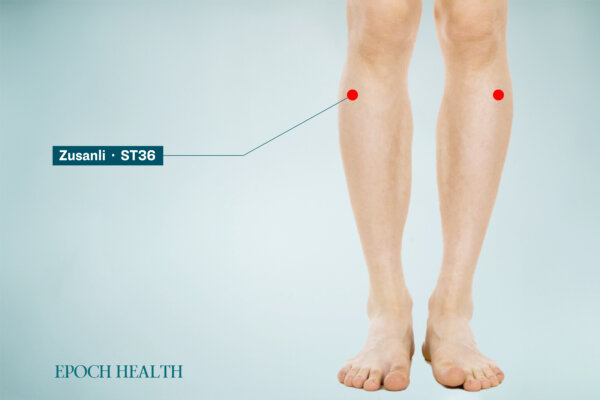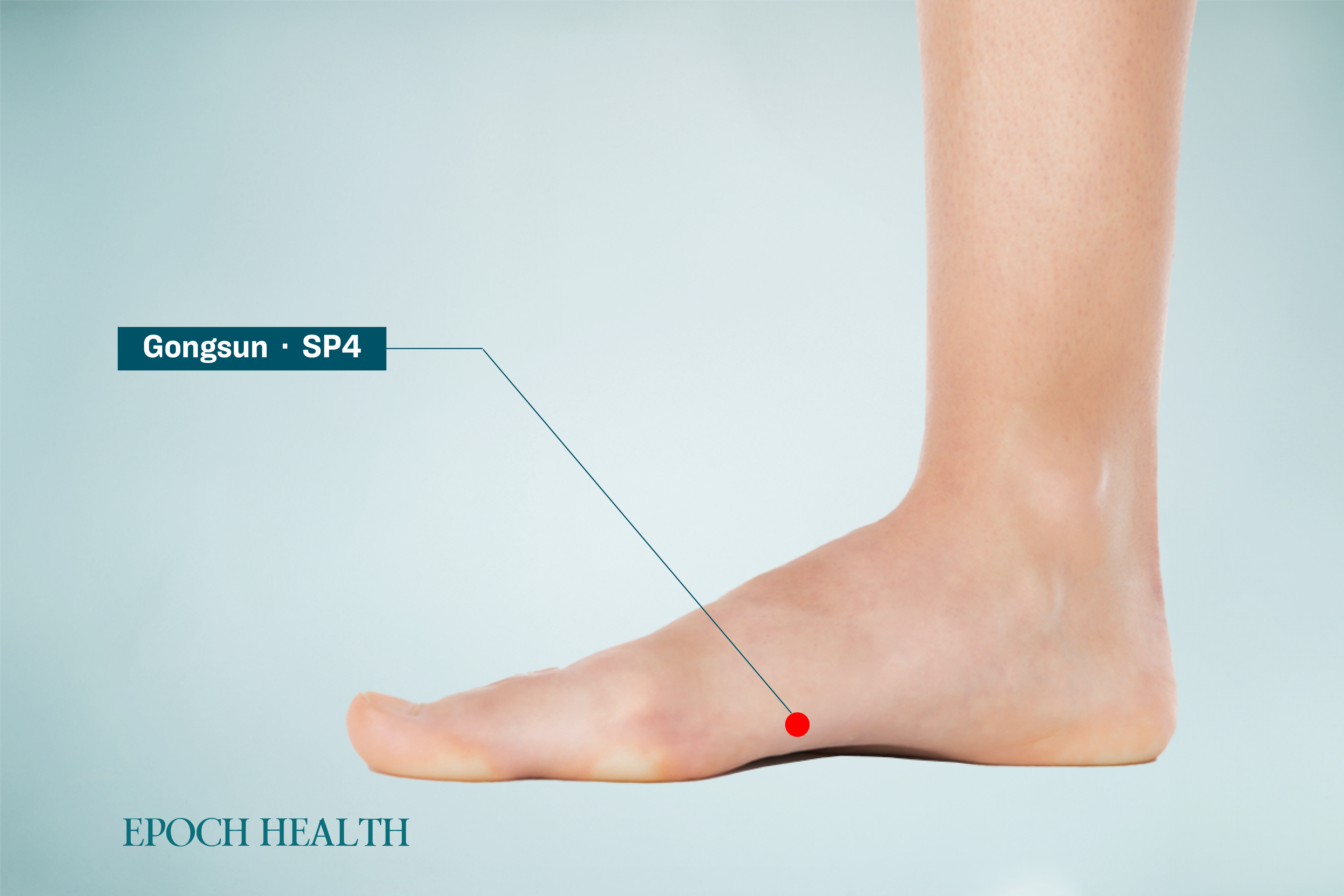Symptoms of bloating or acid reflux post-meal do not necessarily require stomach medication. A three-minute self-massage can help improve digestion and promote bowel movements.
Over-the-counter stomach medications contain ingredients such as calcium, magnesium, and aluminum, excessive intake of which may lead to diarrhea or constipation. Excessive aluminum consumption may increase the risk of dementia. Furthermore, long-term reliance on these medications can impair the stomach’s natural functions, affecting nutrient absorption and potentially reducing physical strength. In traditional Chinese medicine (TCM), there are natural remedies that can effectively protect the gastrointestinal system.
2 Major Causes of Stomach Bloating
Bloating and burping after meals can be attributed to two major causes: poor digestion and irregular bowel movements.
Indigestion is often caused by abnormal stomach acid secretion. Eating excessively salty, oily, or sweet foods can lead to an overproduction of stomach acid. Additionally, anxiety and tension can also disrupt the balance of stomach acid secretion. Excess stomach acid can result in inflammation and ulcers in the duodenum. On the other hand, too little stomach acid can cause inflammation and ulcers in the stomach.
Dietary Adjustments: Reduce Consumption of Gas-Inducing Foods
The following eight types of foods are considered triggers for bloating and acid reflux:
- High-starch foods
- Beans—Beans contain high proteins and polysaccharides that are hard to digest, which can lead to bloating.
- Dairy products, such as milk and milk tea.
- Carbonated drinks, such as soda and sparkling wine.
- Fried foods—Fried foods are difficult to digest and tend to stay in the gut for a long time, leading to gas production.
- Sweet foods, such as cakes, desserts, and bread.
- Raw foods, such as lettuce and sashimi.
- Spicy foods
It is worth noting that although some people experience bloating after eating these foods, others do not. Therefore, it is advisable to observe which foods cause bloating for you personally and avoid overeating them in the future.
Lifestyle Modifications
Lifestyle modifications can also help decrease bloating and gastroesophageal reflux. Here are a few habits worth considering:
- Drink a glass of warm water in the morning upon waking up to stimulate bowel movements.
- Practice mindful eating. Avoid the use of phones or other distractions.
- Chew food thoroughly and eat slowly.
- For those with gastroesophageal reflux, it is advisable to separate food and water intake—avoid soups or beverages during meals. They should be consumed one hour before or after meals.
- Avoid eating within three hours of bedtime.
- Taking a walk after meals can help promote digestion.
- When sitting or standing for extended periods, maintain good posture and take short breaks to move around every hour.
Acupressure Massage: A Natural Remedy for Stomach Issues
In TCM, it is believed that the human body possesses natural healing abilities that can be activated by stimulating specific acupoints. Years of clinical practice have shown that massaging the following acupoints can help alleviate bloating and stomach discomfort, and doing so requires only about three minutes per session.
1. Massage Zusanli and Gongsun Acupoints to Alleviate Bloating
Post-meal bloating and flatulence can be both uncomfortable and embarrassing. Massaging the Zusanli and Gongsun acupoints has been found to be highly effective in relieving bloating.
- Zusanli acupoint (ST36) is located three inches below the outer knee, in a depression on the front side of the shinbone. Massaging this acupoint can improve digestion and warm the stomach and intestines.
- Gongsun acupoint (SP4) is located below and in front of the inner ankle, in a depression one inch behind the base of the big toe.
When locating acupoints, it is common to use one’s own fingers for measurement. One inch is equivalent to the width of the first joint of the thumb, and three inches is the width when the other four fingers are held together.


One study found that stimulating the Zusanli acupoint with electroacupuncture can regulate the metabolic functions of the stomach and heart, serving as an alternative therapy for treating gastric and heart diseases. Another study showed that stimulating the Gongsun acupoint can improve the mood and gastrointestinal motility of rats with functional dyspepsia.
2. Massage Abdominal Acupoints for Better Digestion and Bowel Movements
Massaging the following acupoints on the abdomen after meals can promote intestinal peristalsis and help with bowel movements:
- Zhongwan acupoint (CV12) is located four inches above the navel.
- Tianshu acupoint (ST25) is located two inches to the left and right of the navel, totaling two points.
- Guanyuan acupoint (CV4) is located four inches below the navel.
Method: Massage the abdomen clockwise, focusing on the four acupoints mentioned above, 30 minutes to one hour after meals.

The locations of Zhongwan, Tianshu, and Guanyuan acupoints. (The Epoch Times)
Research has found that frequent application of acupuncture on Zusanli, Zhongwan, Tianshu, and Guanyuan acupoints can effectively treat opioid-induced constipation in cancer patients. It can protect the gastrointestinal tract and promote bowel movements.
2 Beneficial Teas for Digestive Health
Traditional Chinese medicine natural remedies for improving digestive health also include teas:
1. Sanxian Tea
People experiencing abdominal bloating may consider drinking Sanxian tea, a traditional herbal tea made from hawthorn, Shen Qu (medicated leaven), and malt. These three medicinal ingredients are generally available in Asian grocery stores.
Preparation:
- Place 0.07 ounces (two grams) each of dried hawthorn, Shen Qu, and malt in a mug.
- Steep for 15 minutes in hot water.
Hawthorn is a traditional Chinese medicine often used to treat indigestion caused by high-calorie diets.
One study indicated that hawthorn can regulate the gut-brain axis and improve gut microbiome imbalance.
2. Hawthorn Malt Tea
According to TCM, the spleen and stomach are part of the same energy system. When these organs are invaded by cold, it can result in indigestion, along with symptoms such as cold extremities, a chilly lower abdomen, a pale complexion, and frequent abdominal pain.
Children with spleen deficiency (insufficient energy in the digestive system) are prone to the aforementioned symptoms and may have poor appetite. Drinking hawthorn malt tea may alleviate these symptoms. The preparation is similar to that of Sanxian tea: Steep 0.07 ounces (two grams) each of dried hawthorn and malt in hot water for 15 minutes.
Hawthorn can aid in digestion and resolve stagnation, promote blood circulation, and dispel stasis. Similarly, malt can aid in digestion, stimulate the appetite, and regulate the spleen and stomach.
Fruits and Vegetables for Reducing Bloating
Extensive clinical practice has demonstrated the effectiveness of white radish in reducing bloating. It promotes the
flow of qi (energy) in the body, acts as a diuretic, and facilitates bowel movements.
Among fruits, papaya and kiwi are top choices for reducing bloating. Notably, papaya contains enzymes that aid in protein digestion. A randomized controlled trial showed that eating two green kiwis per day can increase bowel movements, alleviate constipation, and improve abdominal comfort.
Natural remedies can be used to improve gastrointestinal health. However, it is important to note that diet and therapies may vary depending on the individual. Please consult with a health care professional for a specific treatment plan.
















